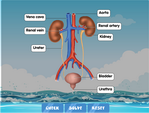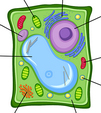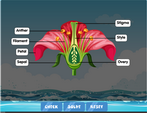Parts of the eye diagram quiz online
Thanks to our eyes, we are able to see the world clearly. Our eyes allow us to distinguish hundreds of thousands of colors and can adjust to let us see in very bright or very dark environments.
Journey into the World of the Eye with Interactive Labelling Diagrams
The human eye is a marvel of biology, acting as the window to the vibrant world around us. For children, understanding the anatomy of the eye can be both fascinating and educational. One of the most effective ways to grasp this intricate organ's structure is through an eye labelling diagram. Interactive resources, especially in the realm of science education, can transform the learning experience, making it engaging and insightful.
Why Eye Anatomy Matters
Before delving into the world of diagrams and labelling, it's essential to understand the importance of the eye's anatomy. Our eyes aren't just simple orbs that allow us to see; they are complex structures with multiple components, each serving a unique function. From perceiving colors to adjusting to various light intensities, our eyes do it all. Knowing each part's role is foundational in any comprehensive science curriculum.
Interactive Eye Labelling Diagrams for Enhanced Learning
Gone are the days when learning was restricted to textbooks. Today, interactive platforms are the way forward. An eye labeling diagram, when interactive, enables learners to engage with each part of the eye directly. They can click, understand, and even test their knowledge, ensuring a deeper grasp of the subject.
For those keen to dive into this interactive experience, check out the Parts of the Eye Diagram Quiz Online. This platform allows children to engage with the eye diagram with labelling, enhancing retention and understanding.
Breaking Down the Eye: Key Components
While the world of eye anatomy is vast, here's a snapshot of the vital parts often highlighted in a labelled eye diagram:
Cornea: The clear front surface of the eye, playing a role in focusing light.
Iris: The colored part of the eye, controlling the amount of light that enters.
Pupil: The black circular center, adjusting size based on light conditions.
Lens: Positioned behind the pupil, focusing light onto the retina.
Retina: Contains light-sensitive cells, converting light into electrical signals for the brain.
Expanding Horizons: Beyond the Eye Diagram
While labelling the eye diagram is a significant step in understanding human biology, the realm of science learning doesn't stop there. For those curious minds eager to explore more, discover a range of interactive science games. From the mysteries of the universe to the intricacies of cells, there's something for every young scientist.
Conclusion: The Beauty of Interactive Learning
In the digital age, interactive learning resources like the eye labelling diagram are invaluable. They provide a hands-on approach, ensuring that children not only learn but also enjoy the process. Dive into the captivating world of eye anatomy, and empower young minds to see the world from a whole new perspective.
The eye is a highly complex organ. In simple terms, it gathers processes light from the environment to form our vision. But to provide us with such high-quality sight, various structures exist within the three main layers of the eye.
The white part of the eye is the sclera, which is the outer layer. Its surface is coated with the conjunctiva to protect against particles.
When light enters, it strikes a thick sheet called the cornea, focusing the light as it enters the pupil – a tiny hole. The colored part of the eye, the iris, changes the pupil size to adjust how much light enters. Behind the iris is a clear, elastic sheet called the lens that focuses the light further as it reaches the retina, which absorbs light and relays the information to the optic nerve of the brain.
Additionally, much of the eye is filled with fluid. Ahead of the lens, the eye is filled by the aqueous humor, made from clear, watery fluid. Behind the lens is a jelly-like substance called vitreous humor. These fluids maintain the roundness of the eye.
In this parts of the eye diagram quiz online, you’ll be able to learn more about the complex structures that make up the eye, and connect them better to their corresponding functions.











